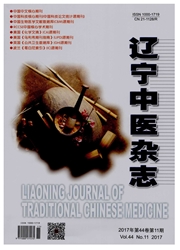

 中文摘要:
中文摘要:
足三里穴为临床常用穴,也是fMRI研究热点。分析现有的国内外足三里的fMRI相关研究文献,结果发现足三里穴在阐述得气、补泻手法、配伍、经穴与非经穴等研究皆具有涉及。但是目前的研究以健康人居多,难以解释病理状态下穴位疗效的中枢机制。且大多是基于针刺足三里的即时效应,难以阐述穴位量效关系。目前研究也表明穴位刺激引起的脑功能变化区并非与穴位本身功能成一一对应关系,具有复杂性。
 英文摘要:
英文摘要:
Zusanli(ST36)is a common acupoint in clinic,as well as the fMRI(functional magnetic resonance imaging)research focus.This paper reviewed the existing native and abroad relative research literature,and found that Zusanli fMRI research involving in explanation of Deqi,reinforcing and reducing manipulations,compatibility of acupoints and relationship between meridian acupoints and sham acupoints as well.However the present studies could not account for the acupoint therapy central mechanism under the pathologic state because the trail subjects are mainly healthy.Meanwhile they are difficult to explain the dose-effect relationship of acupoints as present research is mainly based on instant effect of Zusanli needling.Literature also showed that the relationship about response brain regions and acupoint functions has no one-to-one correspondence relationship,but complexity.
 同期刊论文项目
同期刊论文项目
 同项目期刊论文
同项目期刊论文
 Expertise modulates local regional homogeneity of spontaneous brain activity in the resting brain: A
Expertise modulates local regional homogeneity of spontaneous brain activity in the resting brain: A Alterations of regional spontaneous neuronal activity and corresponding brain circuit changes during
Alterations of regional spontaneous neuronal activity and corresponding brain circuit changes during Partly separated activations in the spatial distribution between de-qi and sharp pain during acupunc
Partly separated activations in the spatial distribution between de-qi and sharp pain during acupunc Alterations in regional homogeneity assessed by fMRI in patients with migraine without aura stratifi
Alterations in regional homogeneity assessed by fMRI in patients with migraine without aura stratifi Increased interhemispheric resting-state functional connectivity in functional dyspepsia: a pilot st
Increased interhemispheric resting-state functional connectivity in functional dyspepsia: a pilot st Two sets of acupoint combination of similar functions engage shared neural representation: an fMRI s
Two sets of acupoint combination of similar functions engage shared neural representation: an fMRI s 期刊信息
期刊信息
